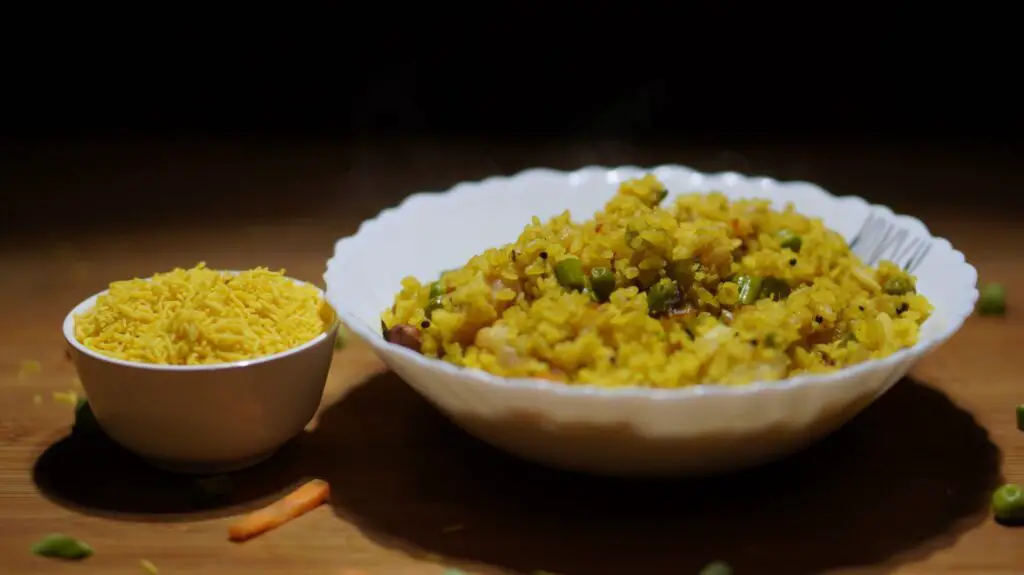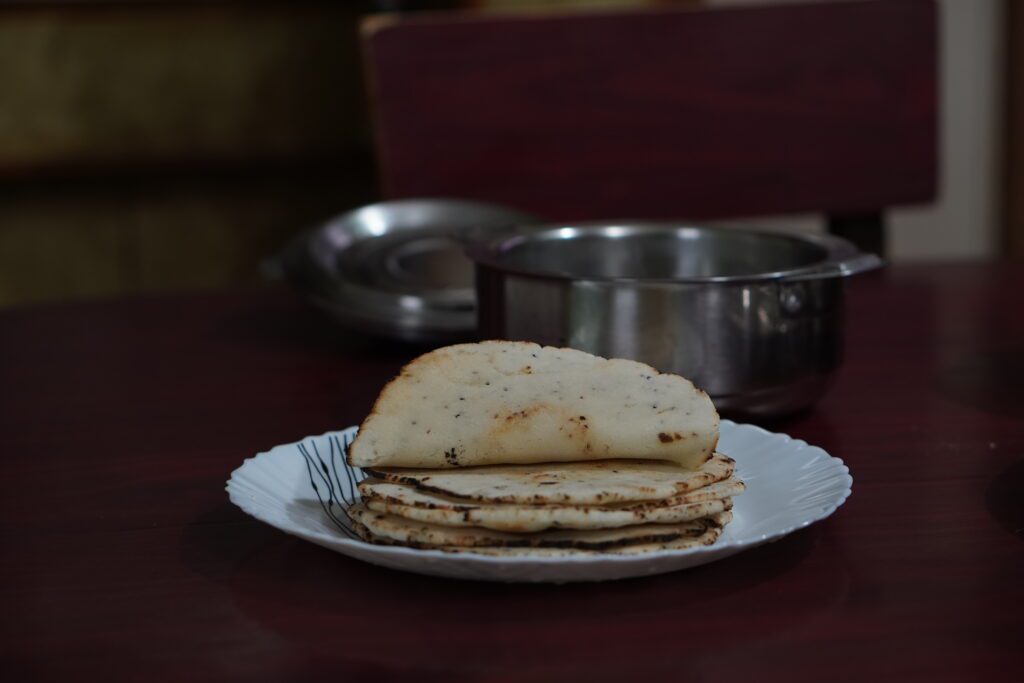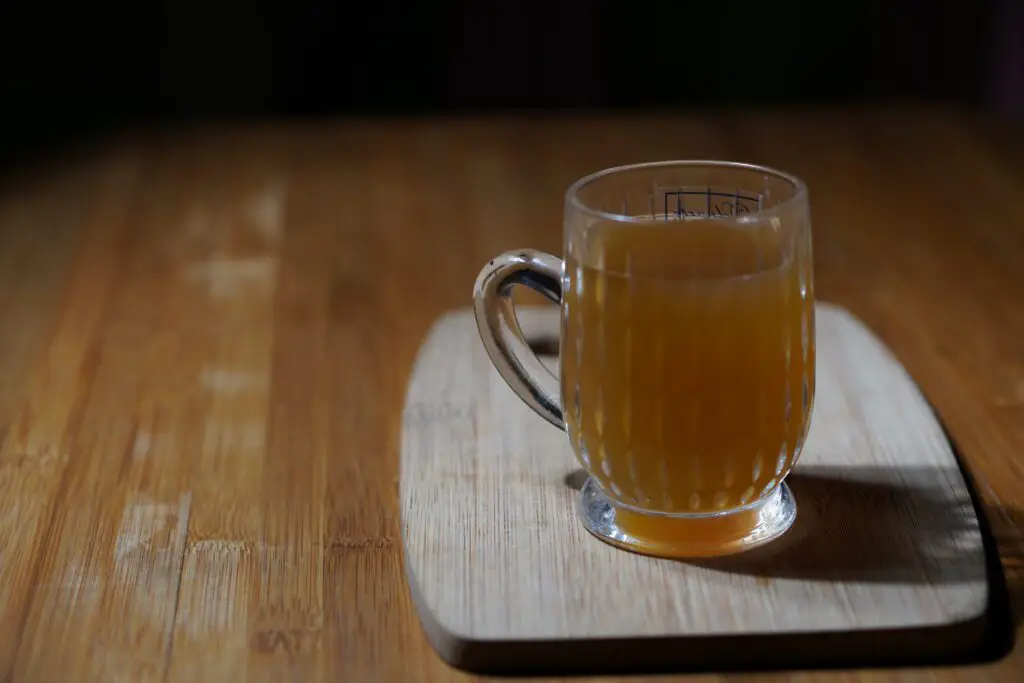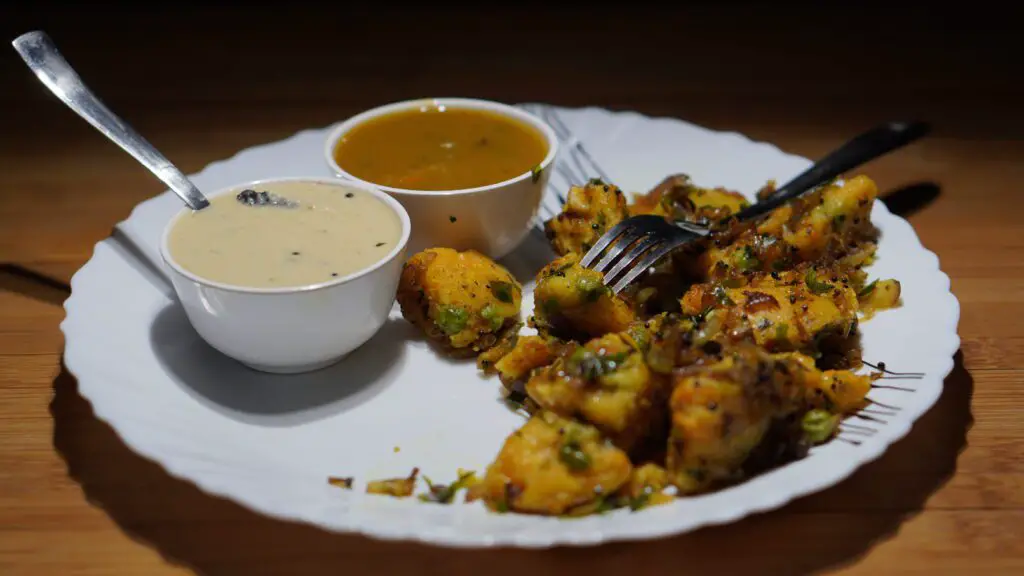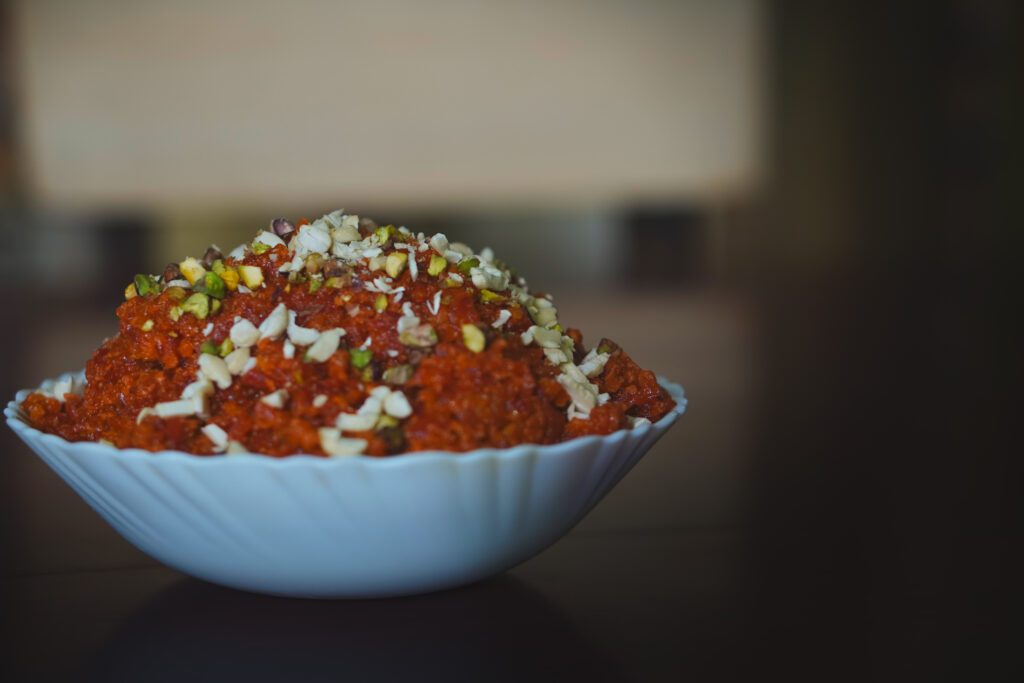Poha is a flavourful, enjoyable, and tasty food commonly prepared in Indian kitchens for breakfast and evening snacks. Kids love to carry this preparation in their lunch boxes. People have enjoyed this recipe for ages. It is prepared from flattened rice flakes cooked with spices and vegetables and is delicious as well as very healthy. Flattened rice is gluten-free, so this recipe suits people with gluten intolerance. This recipe is easy to prepare and can be tailored according to personal choice. So before going into detail about preparing this recipe, let’s check out some facts and health benefits of poha.
What is poha?
It is a dominant food in many regions of India, Nepal, and Bangladesh. Its preparations can be stored for long-term consumption of up to two weeks. Its other popular names are Chura, Chivda, Pauwa, Sira, or Aval. For preparing poha, rice grains are half-boiled and then flattened with the help of a pestle and motor or with iron rollers. Depending on the thrust applied for flattening rice, poha can be of different thicknesses varying from very thin, medium, to thick. For preparing this recipe, medium to thick types is suitable, as very thin rice flakes get pulpy on soaking.
Health benefits of poha
Several health benefits of poha are:
easily digestible
Its high fiber content naturally adds bulk to the digestive tract, stimulating the intestines and controlling blood sugar release into the bloodstream. In addition, high fibers promote the growth of healthy gut bacteria, thus restoring the biome. Its recipes suit people recovering after illness or having weakened digestive systems.
prevents binge eating
Its high carbohydrate content makes it ideal to have it in breakfast. Moreover, its high fiber content controls the release of glucose from it into the bloodstream, thus keeping one satiated for a long time. This prevents food cravings for longer, which can help lose weight in the long run as it is in calories because of its low-fat content.
prevents anemia
The process of preparing the flattened rice makes it iron-rich. This makes it suitable for preventing anemia due to iron deficiency. It is also rich in vitamin B complex, which further helps in pernicious anemia.
gluten-free
People with gluten intolerance are always in search of gluten-free foods. Flattened rice is a healthier option for them as it is gluten-free, easily digestible, and can be incorporated into a regular diet.
poha recipe
ingredients
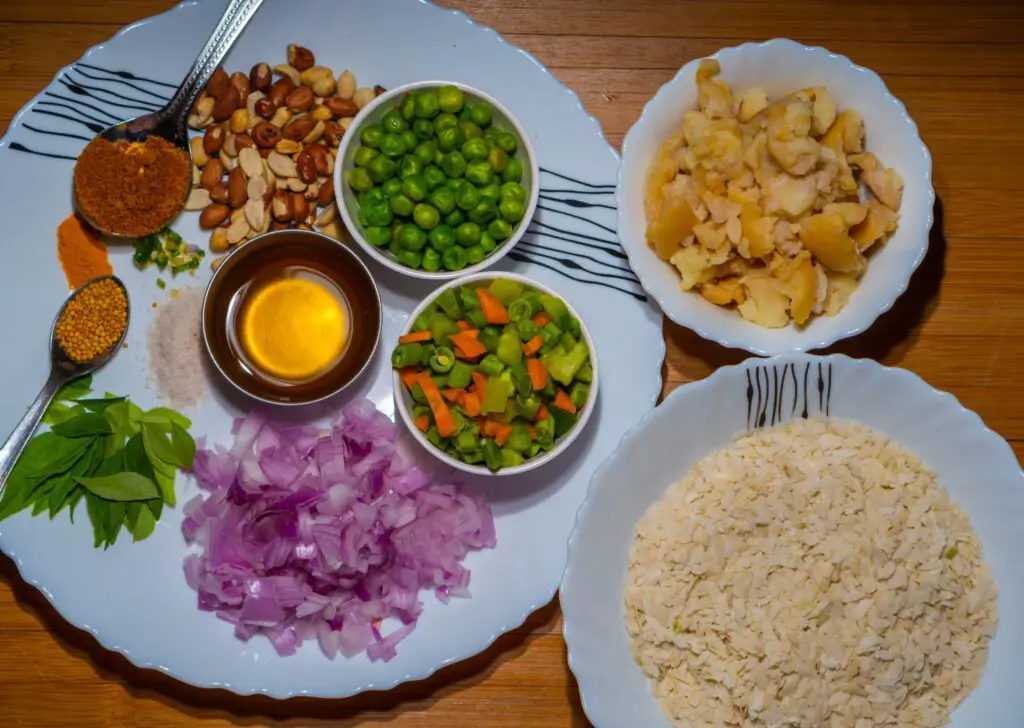

- 2 cups flattened rice flakes
- 2 onion finely chopped
- 1 boiled potato peeled and lightly mashed
- 1 cup finely chopped carrots, beans, and capsicum altogether
- 1 tablespoon green peas
- 1 tsp jaggery powder
- 1/4 cup of peanut(roasted)
- 1/2tsp of mustard seed
- fresh curry leaves
- Salt, green chilies chopped, according to taste
- 1 and 1/2 tablespoon oil or butter
- 1 tsp of turmeric powder
- fresh coriander leaves to garnish(optional)
method of preparation
Properly rinse the poha under running water for one minute. For this recipe, medium to thick flattened rice should be used, as very thin rice flakes on rinsing can become pulpy, losing their shape. After rinsing, check the poha with your fingers, and you should not feel any hardness while crushing them. If there is hardness inside, sprinkle some water over it and keep it aside.
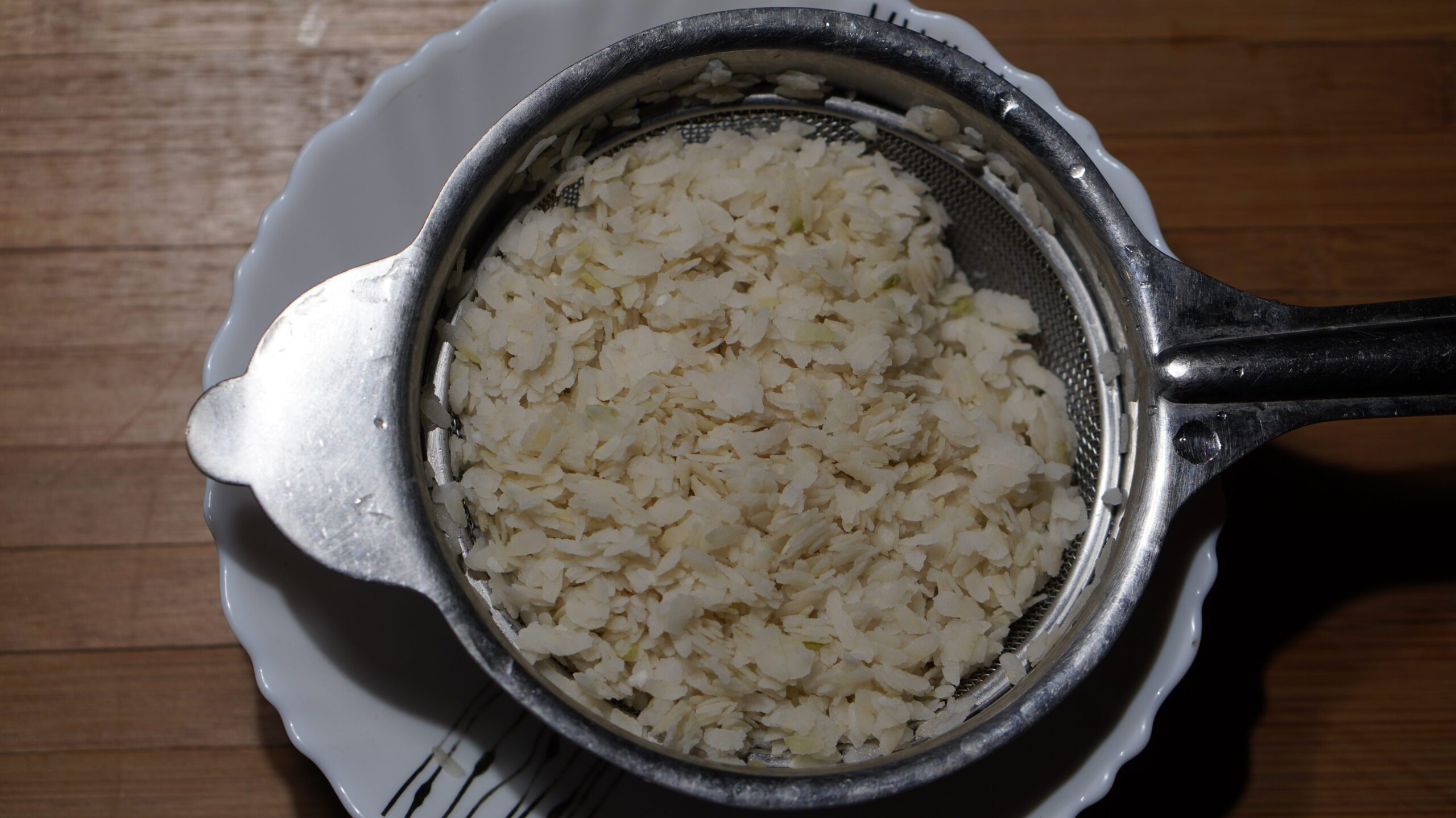

Now, in a frying pan, add 1& 1/2 tablespoons of oil or butter, and when the oil gets heated up, add to it half a teaspoon of mustard and keep the flame low.
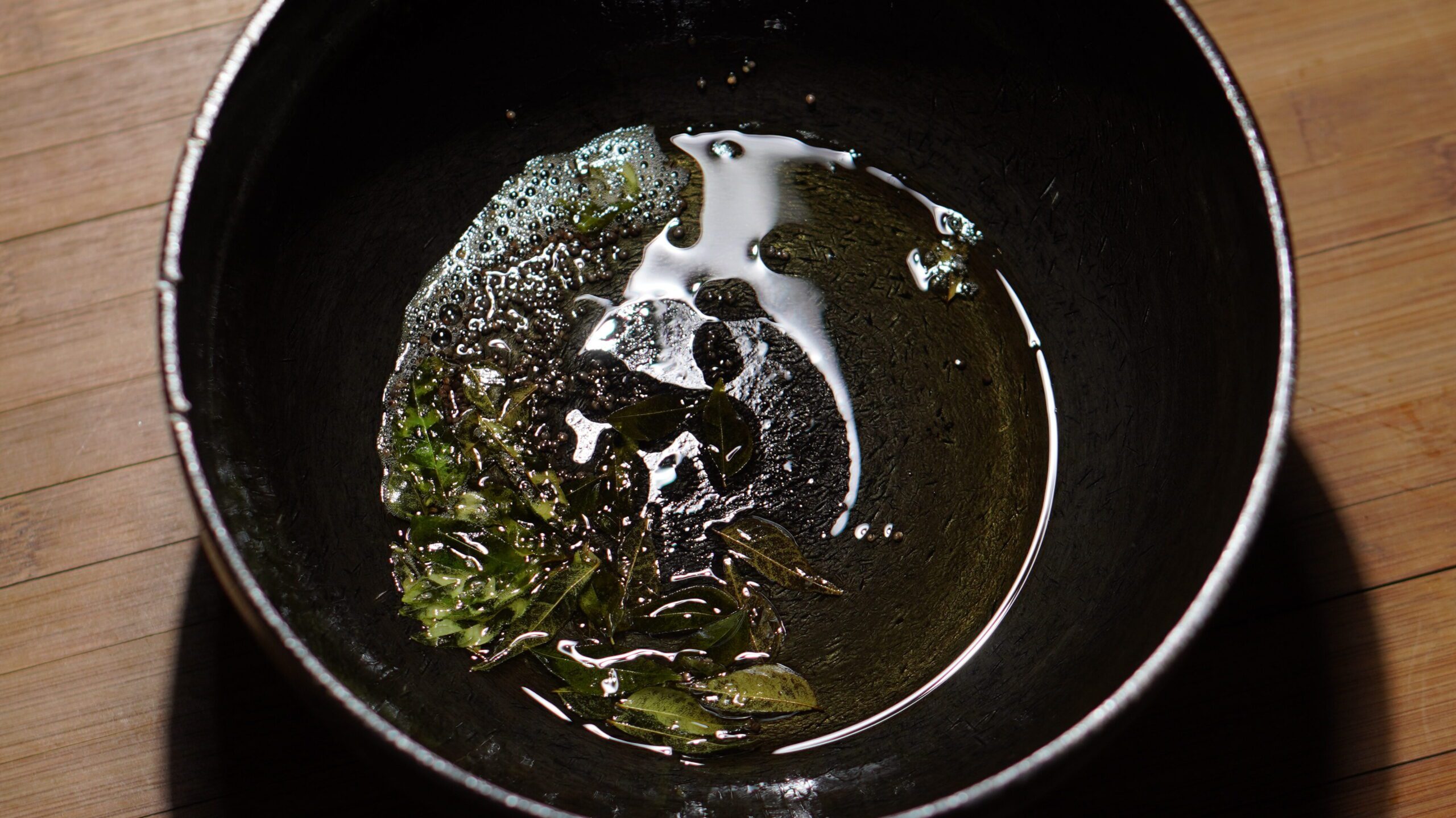

When the popping sound coming from mustard seeds ceases, add chopped onion over it and stir fry until the onions become sweaty.
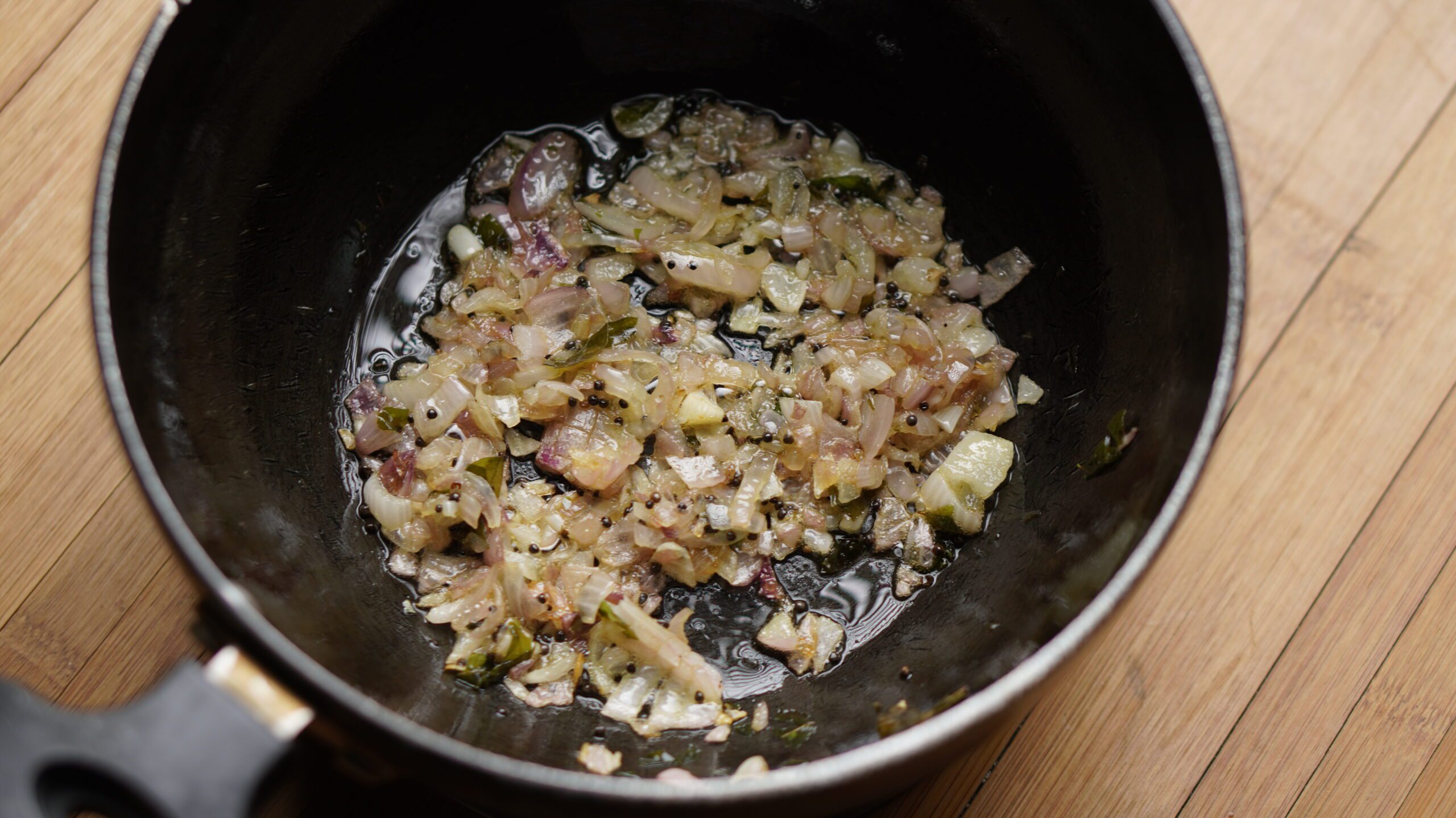

Now add curry leaves all the chopped vegetables, and boiled green peas, and toss and add salt and green chili according to the taste. Add turmeric, and cover the pan with a lid at low flame for five to six minutes till the vegetables are cooked.
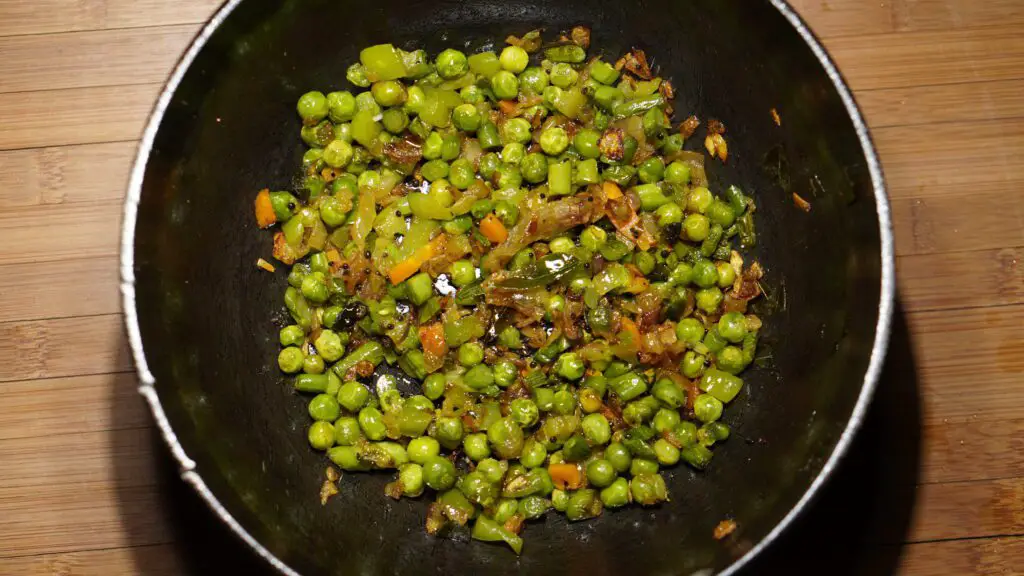

Now add 1 teaspoon of sugar and boiled potato and cook it for a minute.
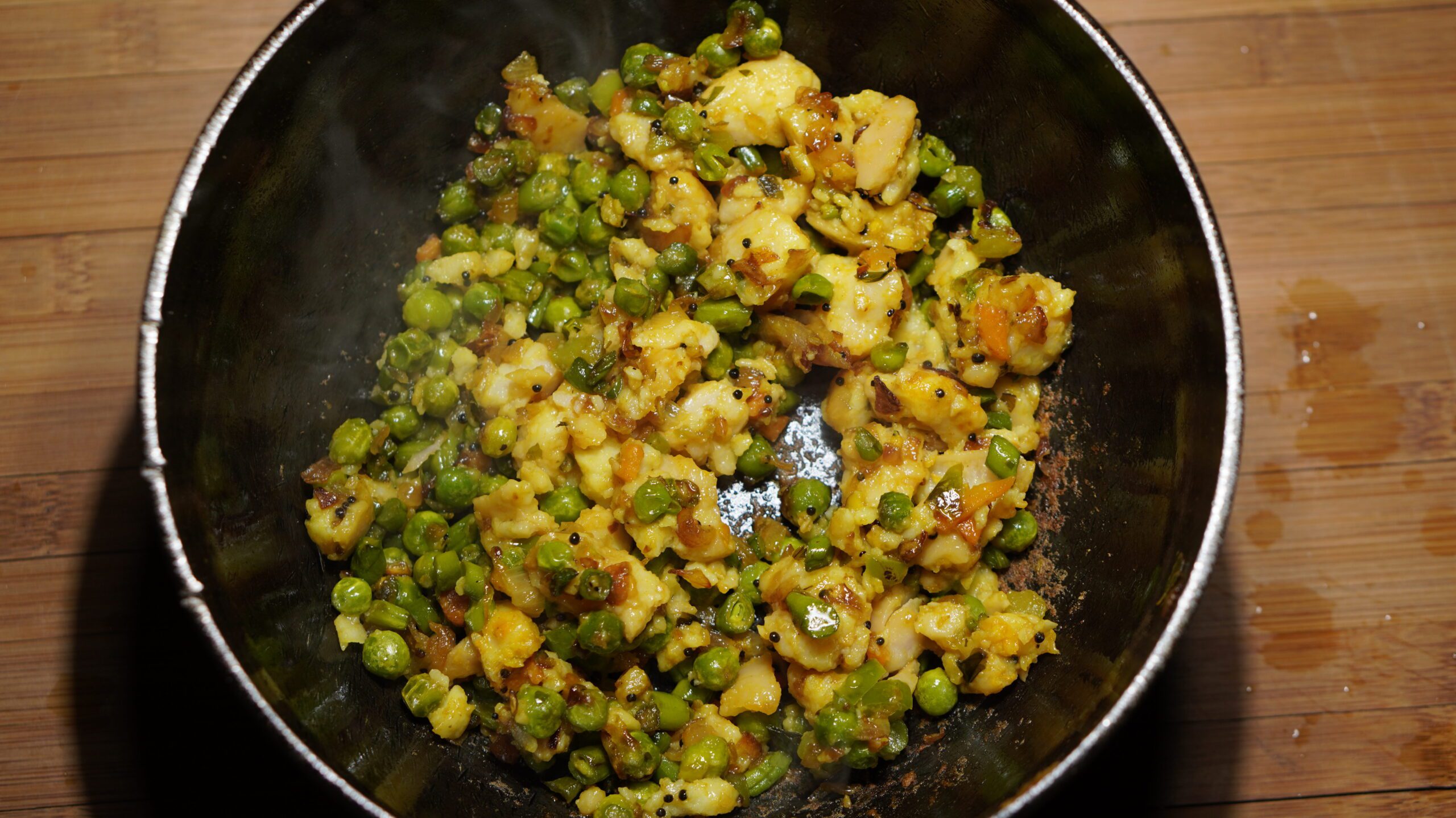

Transfer rinsed Poha into the pan and mix it well with the cooked vegetables. Cook it further at low flame for two to three minutes.


Add roasted peanuts and chopped coriander leaves over it, and your delicious poha recipe is ready to be served. Salted snacks can be added over it to enhance its flavor.
Hope you find this post useful!
If you want to read more of our content, please visit our blog
DISCLAIMER – The tips provided are for informational purposes only and do not constitute professional advice.
